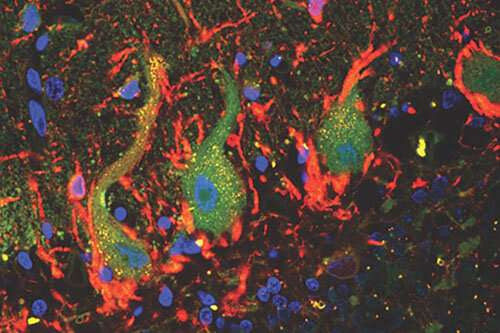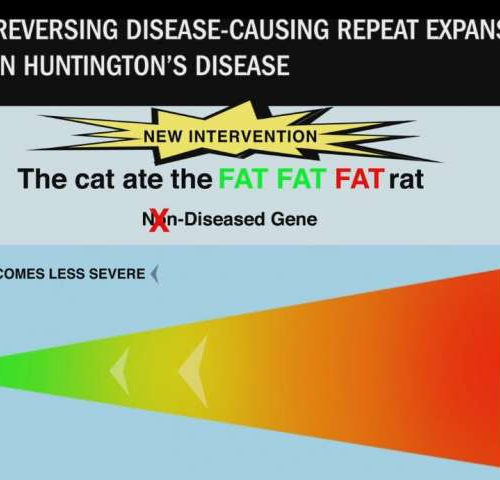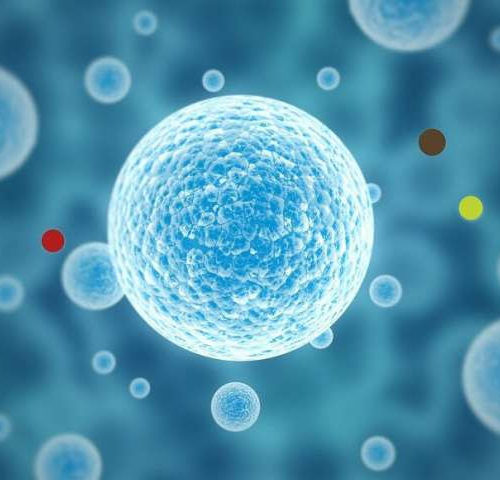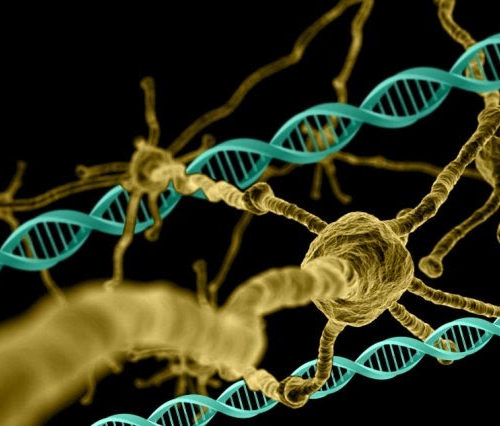by Charlotte Hsu, University at Buffalo Colored lines show the paths of crawling fruit fly larvae. Larvae with a mutant form of the human huntingtin protein that causes Huntington’s disease crawled poorly (center) compared with normal larvae (left). But when larvae carrying the Huntington’s disease protein also produced extra quantities of the Rab4 protein, crawling...
Tag: <span>Huntington’s Disease</span>
Novel pathology could improve diagnosis and treatment of Huntington’s and other diseases
by University of Bristol Bristol scientists have discovered a novel pathology that occurs in several human neurodegenerative diseases, including Huntington’s disease. The article, published in Brain Pathology, describes how SAFB1 expression occurs in both spinocerebellar ataxias and Huntington’s disease and may be a common marker of these conditions, which have a similar genetic background. SAFB1...
New treatment for common form of muscular dystrophy shows promise in cells, animals
University of Alberta-led team develops synthetic molecule that stops production of toxic muscle-killing protein UNIVERSITY OF ALBERTA FACULTY OF MEDICINE & DENTISTRY UNIVERSITY OF ALBERTA MEDICAL GENETICIST TOSHIFUMA YOKOTA LED A RESEARCH TEAM THAT CREATED A POTENTIAL NEW TREATMENT FOR ONE OF THE MOST COMMON FORMS OF MUSCULAR DYSTROPHY. Researchers have designed a potential new...
Antihistamines and similar drugs could slow down Huntington’s disease
Controlling dopamine signalling by targeting the histamine receptor has been shown to be a promising strategy for preventing the progression of Huntington’s disease in mice Scientists have described a potential new therapeutic strategy for slowing down early-stage Huntington’s disease in a new study published today in eLife. The research in mice indicates that targeting the...
Huntington’s disease-causing DNA repeat mutations reversed in the lab
Neurodegenerative diseases, like Huntington’s disease and myotonic dystrophy, are often referred to as DNA repeat diseases, named because of long repeated sequences in the DNA of patients. Increasing repeat expansion length in the affected tissues contribute to earlier age of disease onset and worsen the progression and severity of the disease over time. Graphic portrays...
Researchers produce first physiotherapy guidance for Huntington’s disease
by Cardiff University Cardiff University researchers are part of a global consortium who have published the first clinical guidance for the management of Huntington’s disease through physiotherapy. It follows more than a decade of ground-breaking collaborative research led by the Cardiff team into how to manage the devastating and life-limiting neurodegenerative condition. There is no...
New cohort of iPSC lines will accelerate research into Huntington’s disease
by CORDIS The European Bank for induced Pluripotent Stem Cells (EBiSC) and CHDI Foundation have collaborated with Censo Biotechnologies to generate a cohort of 45 iPSC lines derived from Huntington’s disease gene-expansion carriers and associated controls. These new lines will be used to further investigate the mechanisms of HD progression and for the development of...
Genetic screen offers new drug targets for Huntington’s disease
Using a type of genetic screen that had previously been impossible in the mammalian brain, MIT neuroscientists have identified hundreds of genes that are necessary for neuron survival. They also used the same approach to identify genes that protect against the toxic effects of a mutant protein that causes Huntington’s disease. These efforts yielded at...
Research using brains-in-a-dish forces a radical rethinking of Huntington’s disease
By SHARON BEGLEY @sxbegleDECEMBER 10, 2019 Even allowing for the fact that these were lilliputian brains, they were not behaving at all according to plan. From the first days of the tiny lab-grown organs’ development, primitive “progenitor cells” romped out of their birthplaces in the deep interior and quickly turned into neurons and glia, specialized...
Researchers identify a molecular mechanism involved in Huntington’s disease
by University of Barcelona A montage of three images of single striatal neurons transfected with a disease-associated version of huntingtin, the protein that causes Huntington’s disease. Nuclei of untransfected neurons are seen in the background (blue). The neuron in the center (yellow) contains an abnormal intracellular accumulation of huntingtin called an inclusion body (orange). Credit: Wikipedia/...







